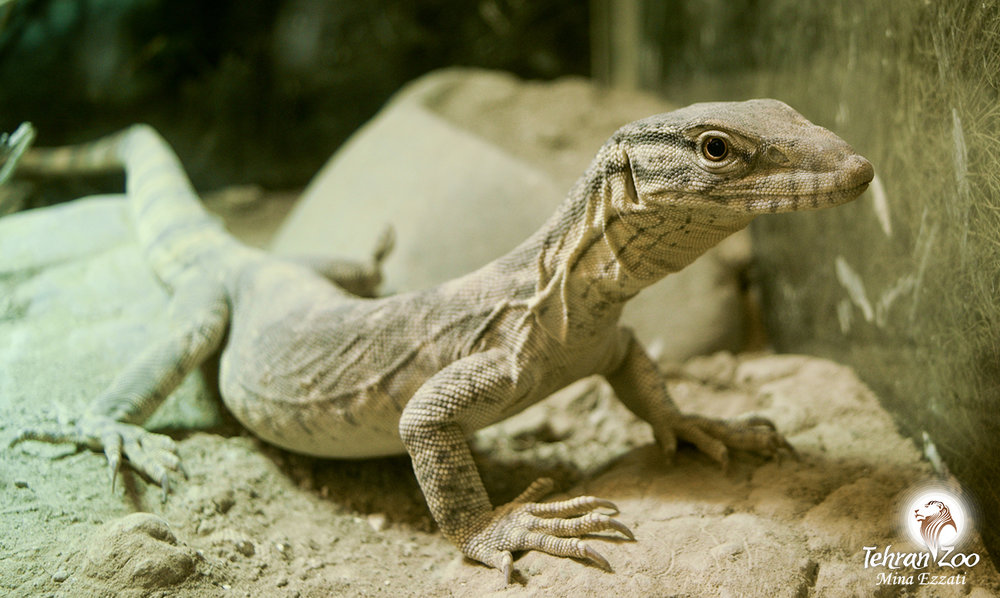Lizards in depth

Over 4,675 species of lizard found around the world, according to the San Diego Zoo. Some sources raised the number and pointed to approximately 6,000 species. Lizards are found all over the world in almost every type of terrain. Some of them live in trees, some confined to deserts and some being in contact with rocks.
Lizards in Iran
Environmental factors such as moisture, elevation and temperature can influence distribution patterns of animals e.g. lizards. The Complete Fauna of Iran pinpointed to lizard's distribution and adaptation; "Lizards are found in wide variety of environments in Iran, from bleak deserts to high mountains, from the Caspian shores to the sands of Sistan, in the mud structures of villages and the stones of Persepolis. Ecological criteria evidently have the greatest influence on their distribution and different genera or species have, in turn, adapted to different environments and habitats." S.C. Anderson has described the close correlation between the type of substrate and the local distribution of lizards in Iran and Southwest Asia.
Substrate type
Steven C. Anderson in the book of Lizards of Iran wrote: "Certain Iranian lizard species are adapted for life in or on eolian sand dunes, or at least on sandy soils, and are more or less restricted to such zones. The most widely ranging forms in Southwest Asia are those occupying the greatest range of substrates such as Varanus griseus, Eremias persica, Trapelus agilis, Mabuya aurata, and Eumeces schneideri, or those inhabiting the most continuously distributed substrates such as Mesalina watsonana. Evolution of the various lizard groups in Southwest Asia may be significantly correlated with this affinity for substrate type, and the discontinuous distribution of these substrates."
Poisonous or venomous?
Terms such as poisonous and venomous often use as similar words and even gained ground but there is a gap which refers to incorrect use. Poisonous and venomous animals have some basic differences, so we cannot use venomous and poisonous as similar words. But the common point refers to produce a toxin in both venomous and poisonous that is injurious or even lethal for some kind of organisms.
A battery of different wildlife texts seems so patchy but the mainstay involves how that toxin is delivered. In fact, venomous animals or organisms deliver or inject venom into other organisms by using a specialized apparatus of some kind usually fangs or stinger. But poisonous animals or organisms, on the other hand, do not deliver their toxins directly. The entire body, or large parts of it, may contain the poisonous substance.
Now, the problem refers to lizards, are they poisonous or venomous?
The only venomous lizard in the world is the heloderma, that also called the Gila monster and beaded lizard. In fact, just members of the family of Helodermatidae are venomous. Their venom glands are located in their lower jaws and have some differences with snakes. Firstly, the venom glands of snakes are located in upper jaws and secondly, lizards do not have musculature to inject venom. The venom is typically use in defense and the lizard must chew its victim to work the venom into the flesh. Heloderma is the only genus of the family Helodermatidae that is venomous and native to the Southwestern of U.S., Mexico and as far south as Guatemala. But Lizards of Iran are not venomous. Some people believe wall lizards or geckos who found in most homes are venomous which is absolutely wrong.
Until a few years ago, only two (the Gila monster and the Mexican beaded lizard) were thought to be venomous. Scientists also believed that those two species had evolved venom production independently from snakes. Indeed, until recently, nasty swelling and excessive bleeding resulting from another lizard's bite was thought to be due to infection from the bacteria in the reptile's mouth. But a team of searchers from the University of Melbourne, Australia have revolutionized herpetology by showing that venomous lizards are actually much more widespread than thought.
Lizard's importance
Many lizards are carnivores, which means they eat meat. A typical diet for a lizard includes ants, spiders, termites, cicadas, small mammals and even other lizards. Many lizards of Iran are adapted with drought conditions but most of them are threatened by human conflicts such as change of land-use, road building, climate change, and so on. Extensive change of vegetation and also lack of water sources in the most arid regions of Iran, considered as a big problem. Now vulnerability and population distribution of many species such as Turan Toad-headed Agama increased and this could be a common ground for other species too.
The importance of lizards ignored, unfortunately they are not of interest because of many reasons. Their importance to human being is less mentioned but still significant in cases such as overpopulation control of insects, spiders and so on. The big challenge of lizards' survival is the big challenge of human being too. Our impressions of the lizards will evolve as we come to know them better. There is always a need for more research and evidence, but that should never be an excuse for a lack of action.
Leave a Comment